Your MQL Obsession is Costing You Revenue (Do This Instead)
If your target audience is mid-size or enterprise companies, but you’re optimizing your marketing strategy around MQLs, you might be making a big mistake.
Let me explain.
When we focus on MQLs as Marketing’s measure of success, we shift to creating strategies to attract as many people as possible instead of hyper-focusing on the companies that we’re most likely to convert.
In short, MQLs incentivize quantity over quality.
As a result, your contact lists get filled with a wide mix of high, medium, and mostly low-intent leads that SDRs have to sift through.
That creates unnecessary tension between Sales and Marketing, leading to a drop in revenue opportunity.
Data shows that companies with tightly aligned GTM teams achieve 27% faster growth rates than those with alignment problems.
Don’t get me wrong—MQLs have their place.
But in nearly all enterprise-facing contexts, there’s a better answer.
When optimizing for MQLs might make sense
Let’s give credit where it’s due.
The concept behind lead scoring—the practice from which MQLs as a metric are born—is logical, and it does have the Sales team’s best interests in mind.
It works great as a means of filtering out the noise when your SDRs are already spending all day trying to catch up on a flood of inbound leads.
So if you’re targeting a very wide market, that market is in great shape, and your inbound marketing is on point, scoring and optimizing for MQLs might have some value.
MQLs might also be useful when your annual contract value (ACV) is lower and you’re dealing with a single decision-maker, like in the SMB segment.
For example, let’s look at two project management tools—Harlow and Adobe Workfront.
Harlow is aimed at freelancers and SMBs, while Workfront is focused upmarket.
In Harlow’s case, the barrier to purchase is low (we’re talking around $20-30 a month), and there is only one buyer.
The person filling out your lead form is the end user, economic buyer, and champion all in one.
In this case, and assuming they’re flooded with inbound leads and need a quick way to prioritize them, an MQL model makes sense.
Adobe Workfront, on the other hand, is built for enterprise brands.
For deals that size, they’re not just selling to one person—they’re selling to an entire buying committee.
They need to be intentional about which accounts they pursue.
Instead of waiting for the right person to fill out a form, they’ll also need to proactively engage companies that match their ICP.
Gauging marketing’s success by MQLs wouldn’t make as much sense in that scenario.
Why MQLs aren’t the best choice for a primary success metric
It encourages marketing to optimize only for top of the funnel
The root of the issue is that MQLs are generally based on generic lead scoring and high-volume tactics.
You cast a wide net (generally via content distribution), engage as much of the market as possible, “capture” who you can with a lead magnet, and then score how they interact with various marketing touchpoints.
Once they hit a certain scoring threshold, they’re considered an MQL and get handed over to Sales.
As Terry Flaherty from Forrester points out, this process has become the status quo.
The number one reason organizations aren’t moving to buying groups, signals, and a more advanced revenue process is one word: culture. We’re addicted to MQLs as the cornerstone of our culture.
Here’s the problem.
When you use MQLs as a primary success metric, Marketing has less incentive to influence deals deeper in the funnel. The focus shifts to volume at the top of the funnel while Sales handles the rest.
But when you’re selling into an enterprise, Sales needs Marketing support throughout the entire buying journey.
At the enterprise level, deals take longer to get done, require buy-in from multiple stakeholders and the higher contract values come with more scrutiny than a $50/month tool.
On top of that, people at larger companies get flooded with cold pitches all day, to the point that 75% of B2B buyers say they’d prefer a rep-free sales experience.
That’s a lot to overcome for most enterprise revenue teams, which tend to be Sales-heavy.
Instead of only focusing on top-of-funnel awareness, Marketing needs to support deeper relationship-building and provide air cover throughout the sales cycle, adding another layer for people who are less likely to reply to sales emails and Linkedin messages.
This isn’t an anecdotal hot take.
Flaherty has seen conversion rates increase anywhere from 25-400% after companies switch their marketing team's culture from MQLs to providing air cover for sales and targeting buying group members.
Our own internal research shows that buyers who engage with our contact-level ads (i.e. they were influenced by marketing) are 2x as likely to convert.
It limits marketing’s contribution to lead forms
The other issue here is that if Marketing isn’t influencing deals throughout the sales cycle, it's tough to connect marketing activities to revenue.
You start thinking about entry points (attribution) and stop focusing on what pushes deals through the funnel.
For example, a prospect’s first recorded contact with your company might be them responding to a cold email. When that deal is won, the generated revenue gets credited to sales.
But there are a ton of touchpoints between that first interaction and when the lead eventually becomes a customer—some of which likely involved marketing.
However, since MQL models are primarily driven by form-fills, the only way to attribute marketing’s involvement is if someone fills out a form at some point in their journey, which most people won’t do.
So optimizing for MQLs becomes about assigning credit instead of understanding the entire buyer’s journey.
Here’s the other problem with MQLs and lead forms, particularly when you’re going after larger accounts:
- Are the kinds of people you’re targeting (e.g., senior executives at top companies) really downloading your ebooks or showing up at your webinar?
If not, then the prospects you end up optimizing your marketing programs for—because you’re laser-focused on MQLs—are rarely the people with decision-making authority, nor are they the people your sales team is pursuing.
It breaks down Sales-Marketing alignment
The whole “Marketing generates leads, Sales ignores them” has become a bit of a trope.
But cliches are cliches for a reason.
The issue here isn’t just that measuring success using MQLs leads to a focus on quantity over quality, though this is definitely true and hugely problematic.
It’s also that most MQLs just don’t convert.
For most industries, only around 10-20% of MQLs become SQLs, meaning Sales is disqualifying as much as 90% of the leads Marketing sends them.
It’s only natural that this leads to animosity between teams.
Sales feels like Marketing is sending them leads that were never going (or able) to buy in the first place.
And marketing feels like its efforts go unrecognized since Sales focuses on prospects that have a higher chance of closing and hence never touches Marketing’s MQLs.
This can have an immense impact on your ability to drive revenue, as 52% percent of salespeople say that the biggest consequence of poor alignment between Sales and Marketing is lost revenue.
To successfully influence and win enterprise deals, we need alignment between Sales and Marketing, not friction.
Marketing and Sales need to agree on which accounts (and the specific people within them) to target, what programs and channels they’ll use to target them, and how to measure success.
How to move away from the MQL model
Redefine your success metrics
Your first move should be to get Sales, Marketing, and company leadership aligned on what it means to win.
It's not that you can’t measure MQLs at all, but they shouldn’t be the primary focus of the organization.
Instead, move away from siloed metrics and lead scoring to unifying measurements like account engagement, pipeline influence, and opportunity creation.
These are metrics that are directly tied to revenue and that both teams can influence.
Work together to identify target accounts and decision-makers
Marketing and Sales should work together closely to identify and map out target accounts.
This involves:
- Defining your ideal customer profile (ICP) by analyzing the industry, revenue, headcount, and technographic fit of your happiest customers
- Using sales intelligence tools like LinkedIn Sales Navigator to identify accounts that fit your ICP criteria
- Mapping out each account to define the buying committee and align on which individuals you need to connect with (read this guide to find out how)
It's an ongoing collaboration, not a “one-and-done” item on your to-do list.
Say someone from Zapier attends one of Workday’s webinars, but Zapier isn’t on Workday’s target account list.
Marketing doesn’t just mark them as an MQL and push them over to Sales.
Instead, it's a collaborative decision on whether or not Workday’s GTM team should add Zapier to their target account list and how best to engage them.
The same goes for mapping out the buying group.
If Sales finds out about an important stakeholder at Zapier during a call—someone who isn’t part of the buying group you’ve identified—this discovery goes straight to Marketing so they can support with the appropriate air cover.
First-party intent signals are an important indicator here.
There’s a never-ending list of tools that can provide these signals, but for our purposes, we’ll use Influ2 as an example.
With Influ2, you can show ads to the people you think are in the buying group, and then track ad engagement.
When someone clicks on your ad, the sales rep assigned to that account automatically receives a notification via Slack, email, or Salesforce so they can reach out and dig deeper.
This is a smarter use of resources than having salespeople reach out to everyone in the account, the majority of whom haven’t shown any level of intent or awareness.
Develop personalized campaigns
Once Sales and Marketing are on the same page about who to target, the next step is figuring out what to say to get your prospects’ attention.
Just like the previous step, this should also be a joint project.
But it’s not as simple as coming up with broad messaging that speaks to the entire account.
Optimizing for MQLs often causes you to treat an individual lead (whoever downloaded your ebook or attended your webinar) as if they represent the entire account.
So your messaging winds up focusing on what one person might be interested in instead of addressing the needs of the entire buying committee.
That approach works when you’re targeting SMBs and selling to one or two people in an account.
But that’s far from the case when you’re targeting larger companies, which is why an MQL-focused approach doesn’t translate very well.
Instead, you need to speak to the needs and pain points of each decision-maker and influencer involved in the buying decision.
Persona-based messaging is a good start here.
Using Influ2 as an example, we might target Sales leaders with pain point-focused messaging related to meeting attendance, while the CTO sees security-focused messaging, something that’s more relevant to their own objections.
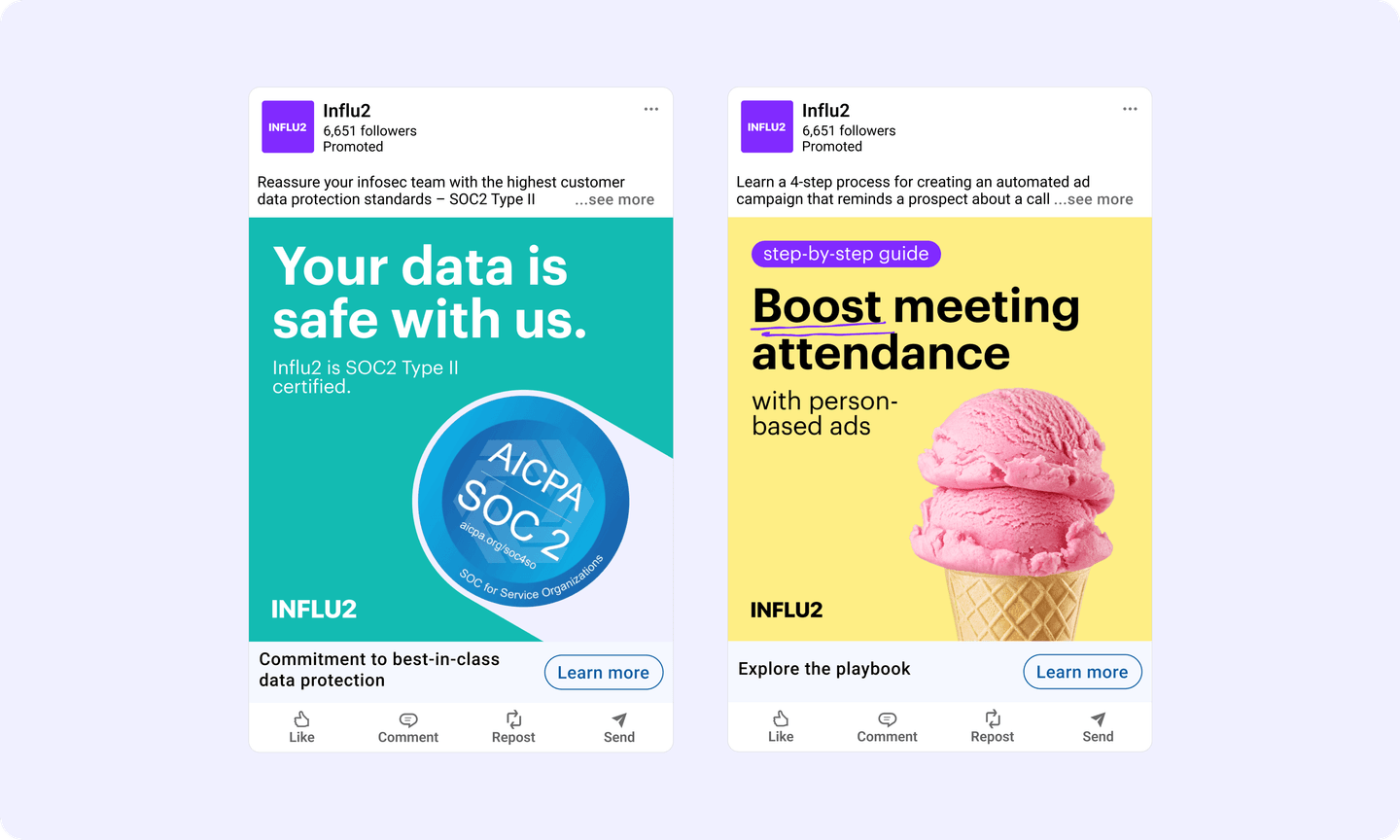
Iterate and refine
As the deal progresses, Sales should communicate regularly with Marketing on the objections, goals, and challenges they uncover from each buying group member they speak to.
Then, marketing can adjust its messaging for those personas accordingly.
For example, if our sales team talks to multiple prospects at a key account and learns they’re more concerned with expansion than acquisition, the marketing team needs to know that so their ads better match the prospect’s pain points.
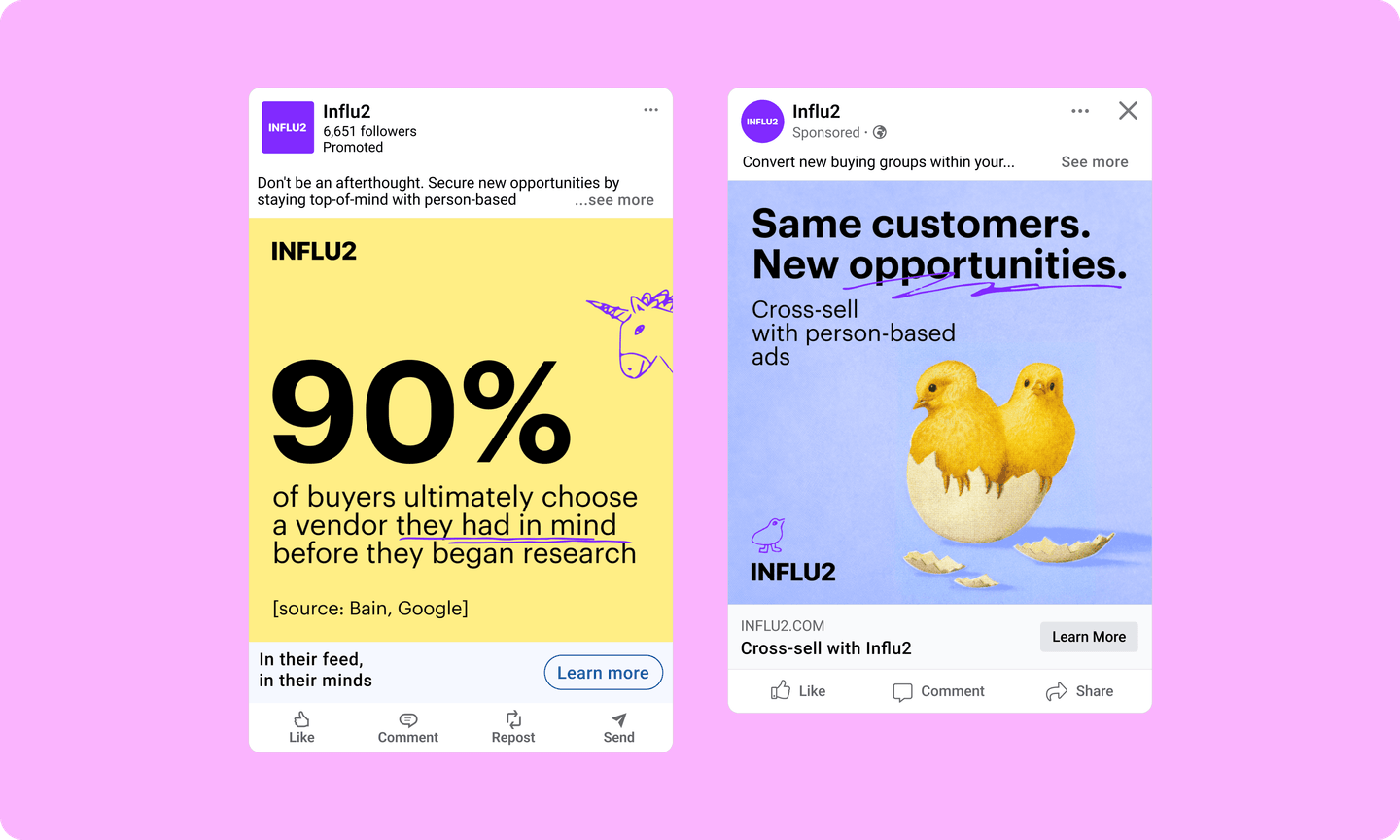
This communication should flow in the other direction as well.
For instance, Marketing should share with Sales how each prospect has engaged with the ads they’re shown, so reps can tailor their approach and better personalize conversations.
With Influ2, reps can access these insights directly in Salesforce, drilling down on ad engagement at the contact level to understand what content has caught the prospect’s attention.
Here's an example of what that looks like. Notice you can see who engaged, when they engaged, and the specific ad they engaged with (without having to fill out a form).
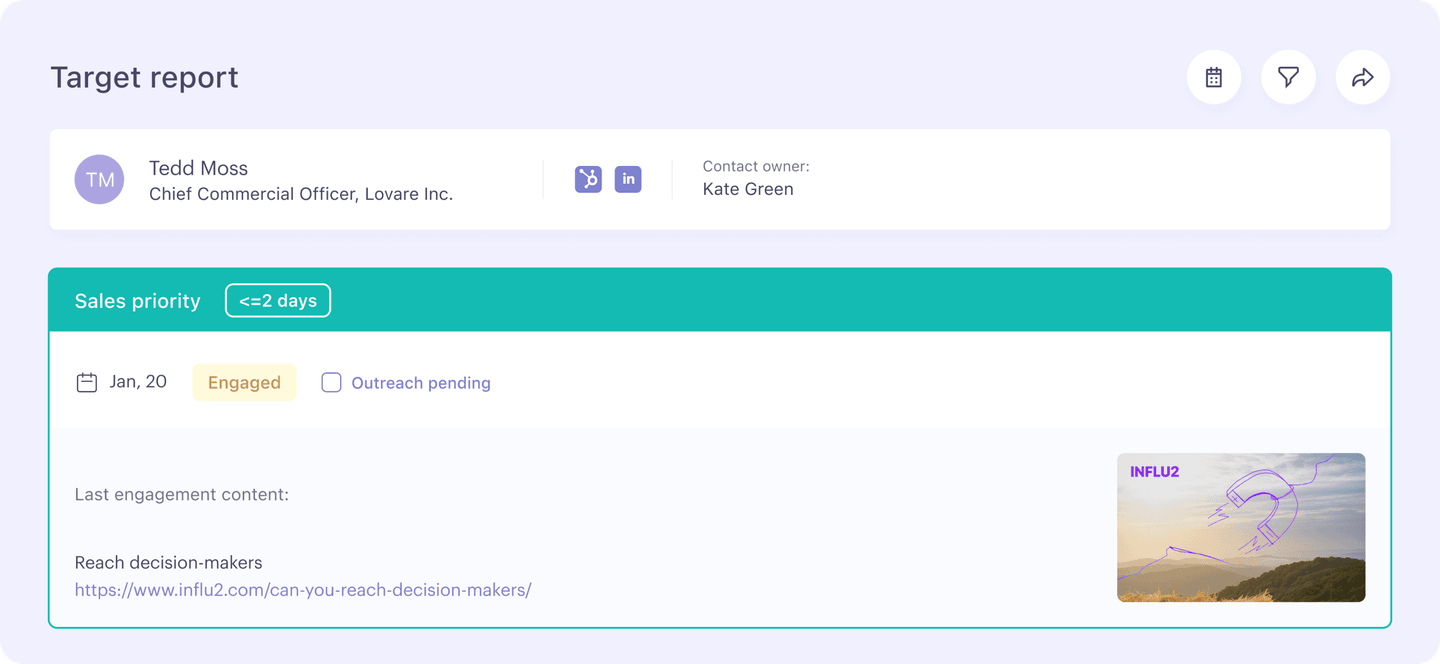
Provide air cover throughout the sales cycle
A core job for Marketing is to make it easier for Sales to stand out.
As Udi Ledergor at Gong put it, "The goal of marketing is to make sales easier.”
The people that Sales is going after are getting hundreds of emails, calls, and InMails from reps trying to get face time.
Marketing can provide air cover with ads from day one, helping to build brand recognition and make it easier for salespeople to open the door to a conversation.
Marketing can literally introduce sales reps to target prospects, making cold outreach a little bit warmer.

You can deliver social proof-based messaging to build trust and increase brand authority before reps even ask for a demo.
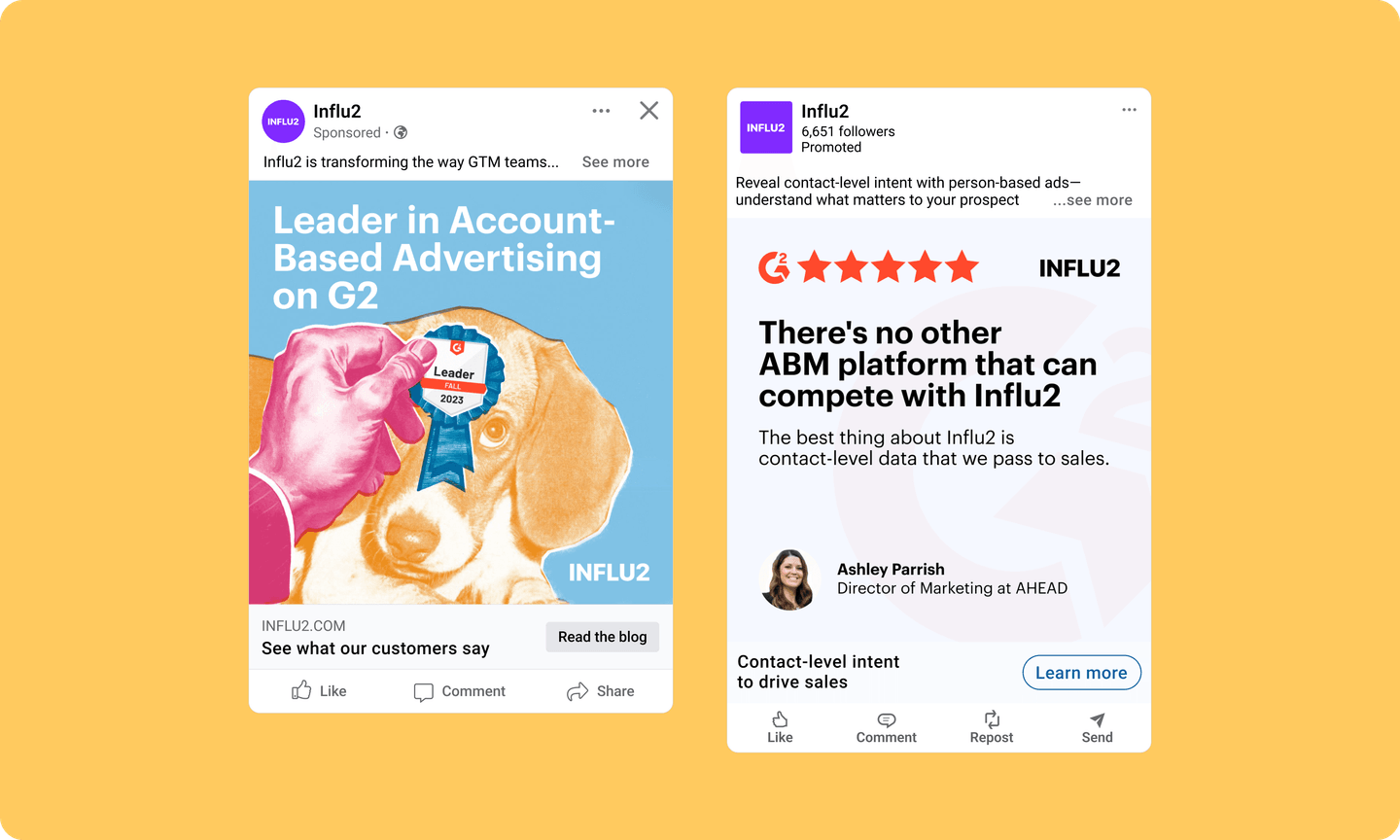
You can reduce demo no-shows and improve the SDR to AE handoff process, increasing Sales’ ability to close new deals.
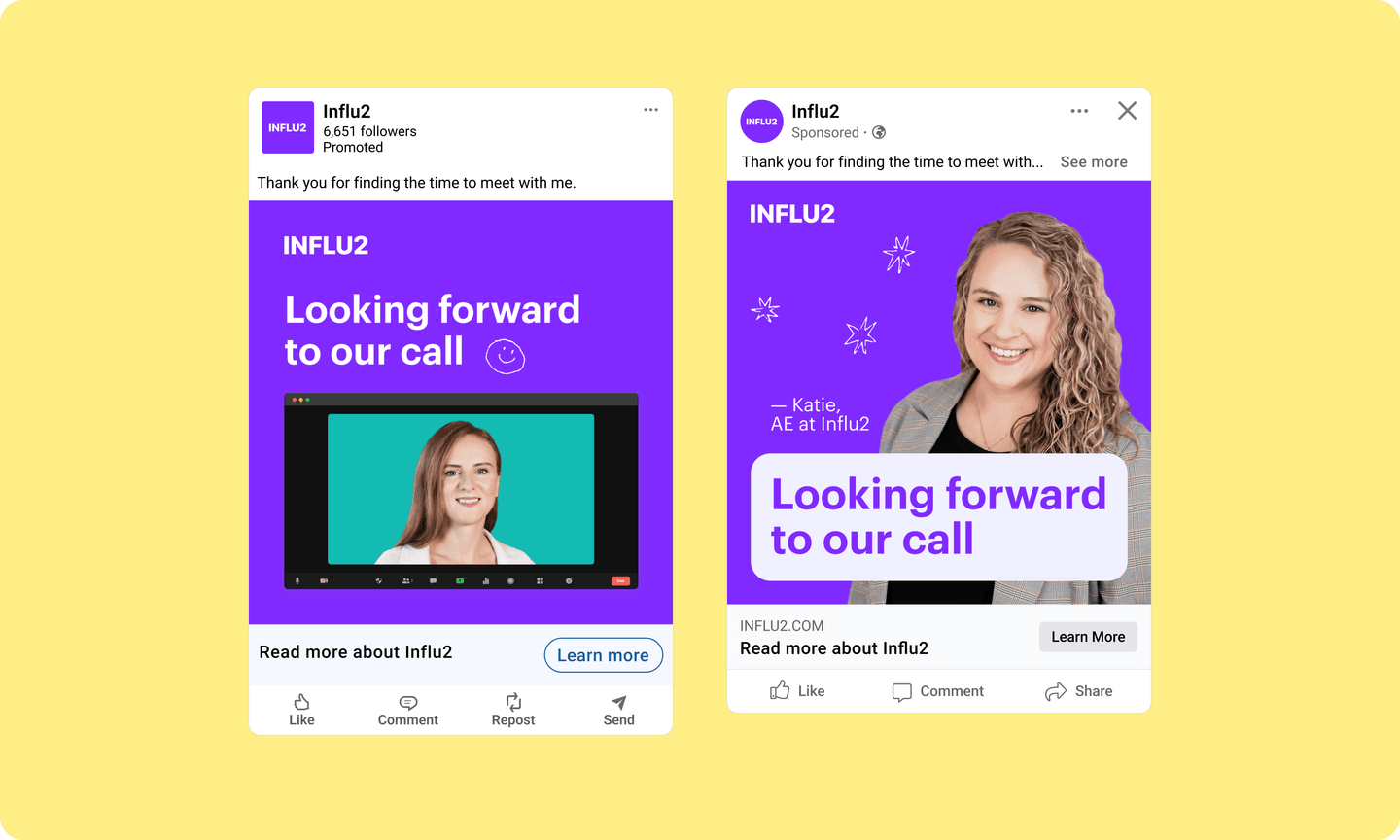
And you can support account expansion programs by continuing to provide air cover for CSMs, helping customers get more value out of your product.
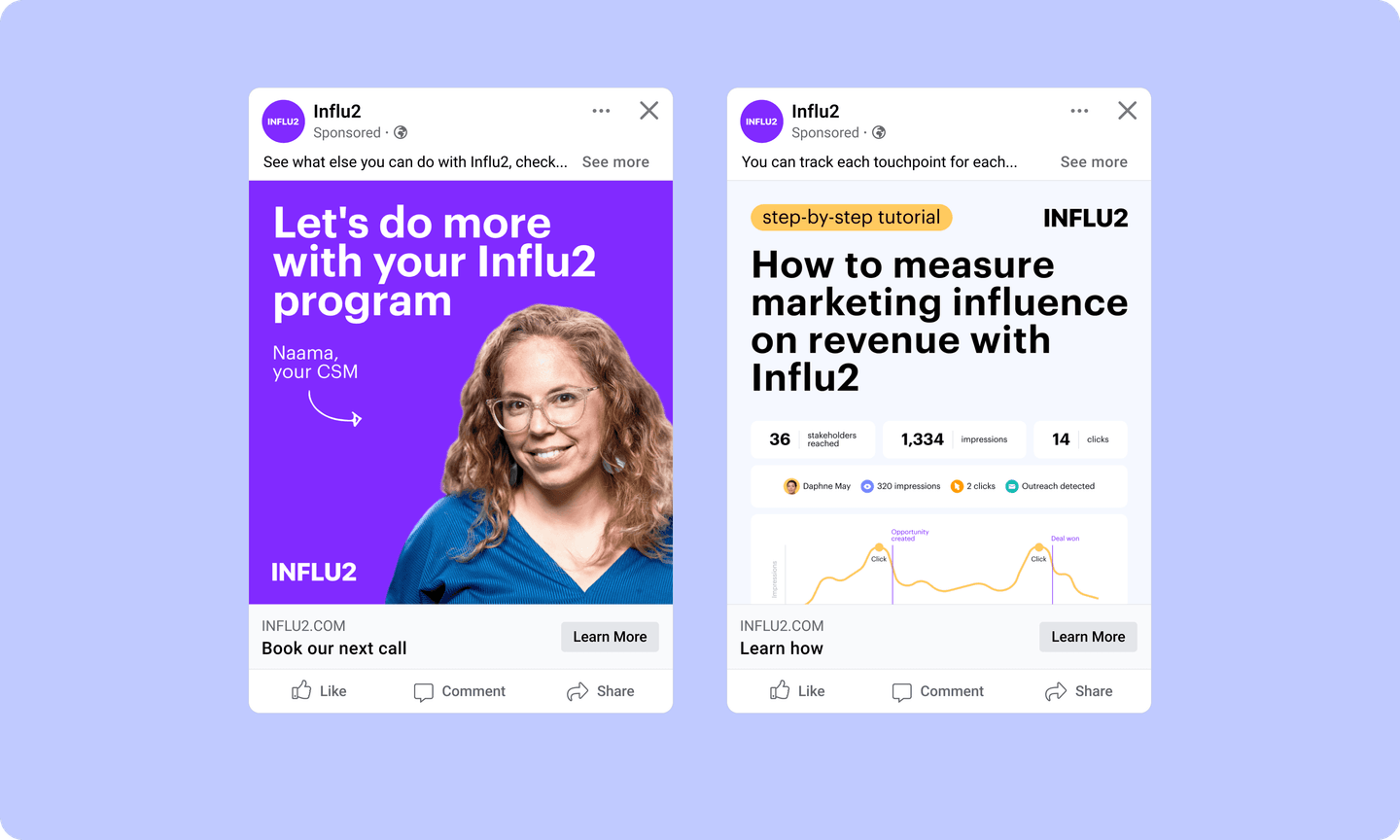
By shifting the focus away from strictly lead generation and the earliest stages of the customer journey, and toward supporting Sales across the entire buying cycle, Marketing increases its ability to influence deals and measure the impact of its programs on revenue.
Final thoughts
MQLs have their place. But they shouldn't be the main measure of success for marketers targeting larger enterprise deals.
A targeted approach focused on influencing revenue (at every stage), rather than just lead volume makes more sense and gives Marketing more influence over revenue.
Dominique Jackson is a Content Marketer Manager at Influ2. Over the past 10 years, he has worked with startups and enterprise B2B SaaS companies to boost pipeline and revenue through strategic content initiatives.


